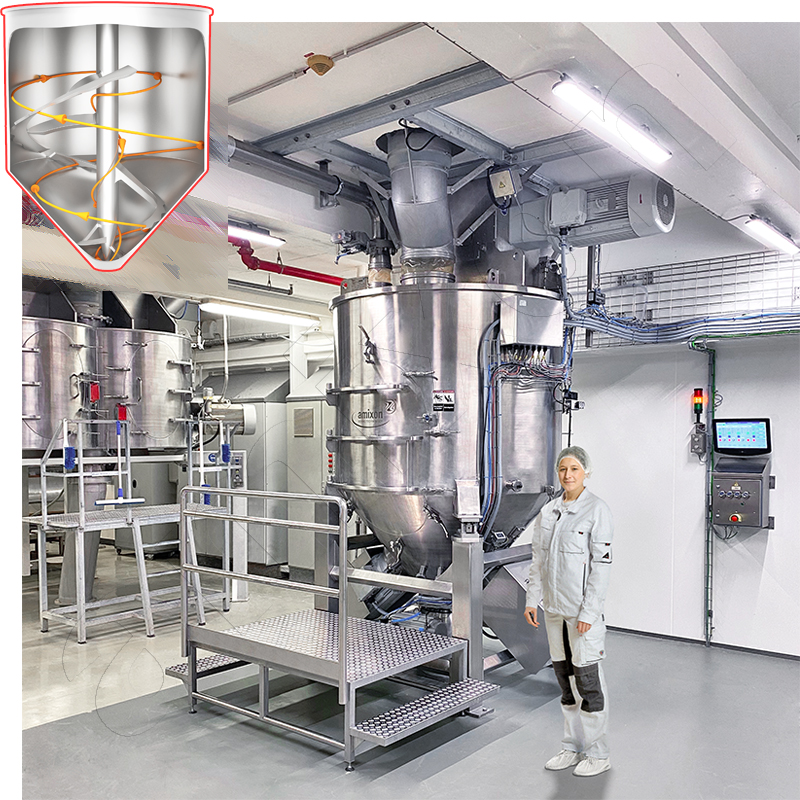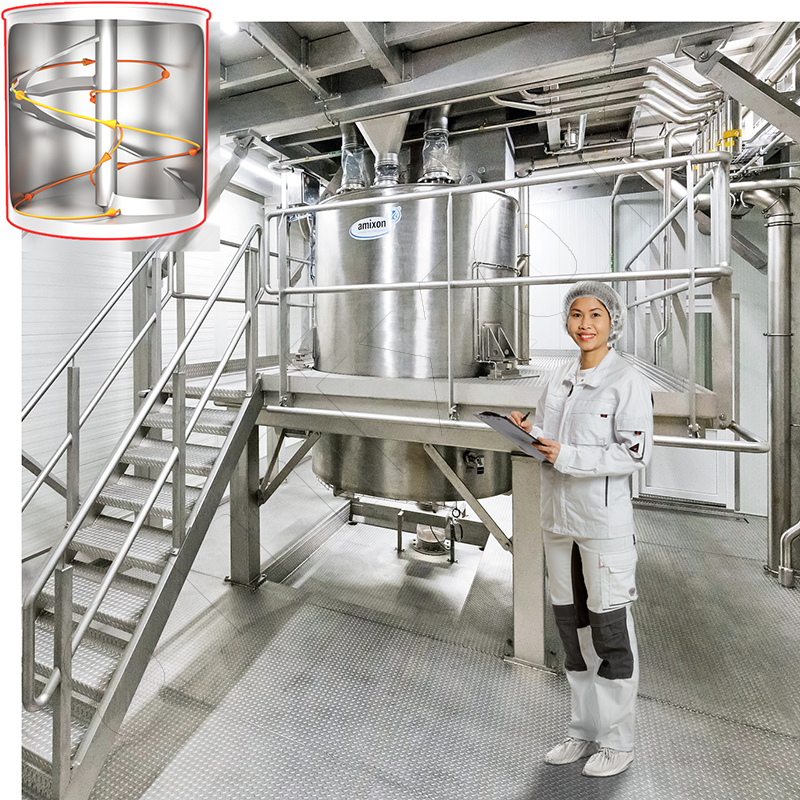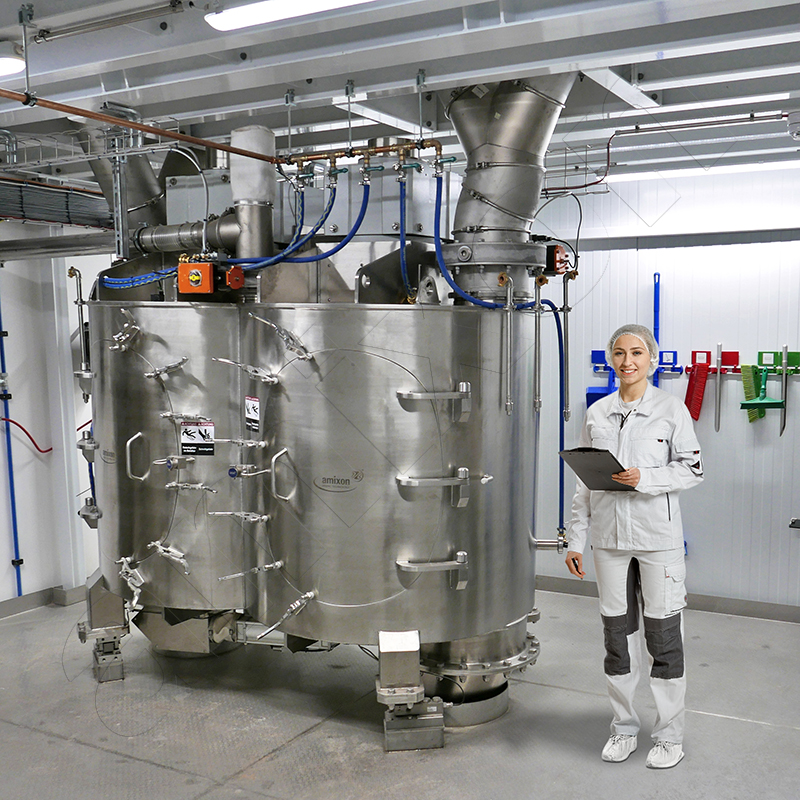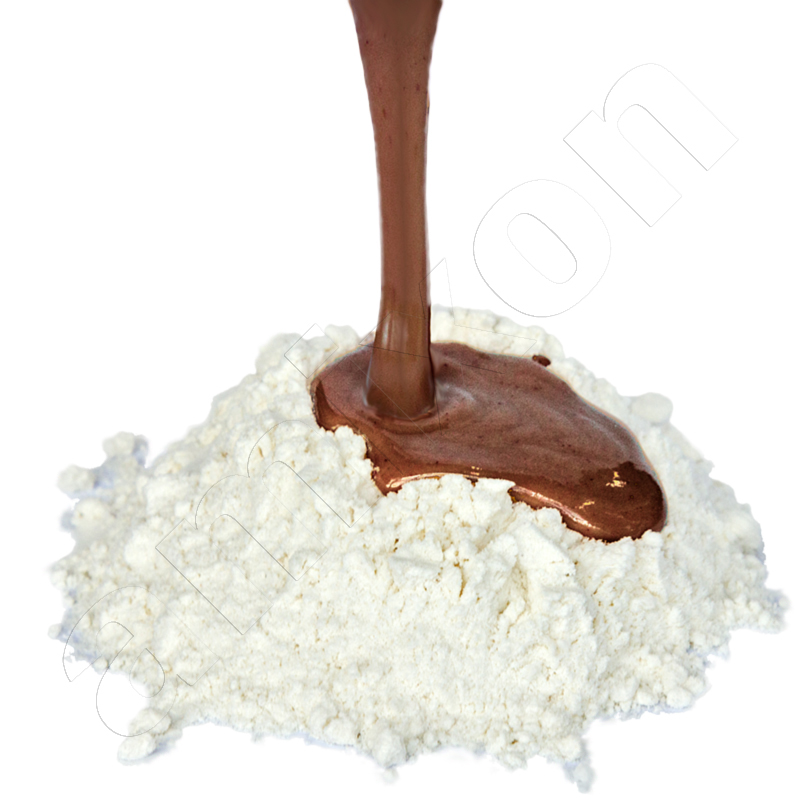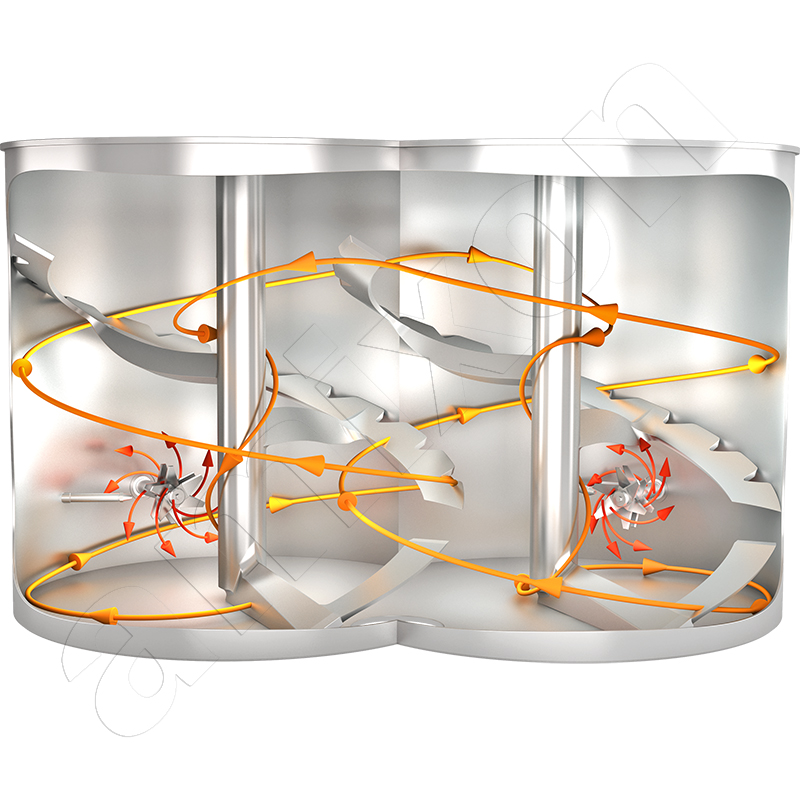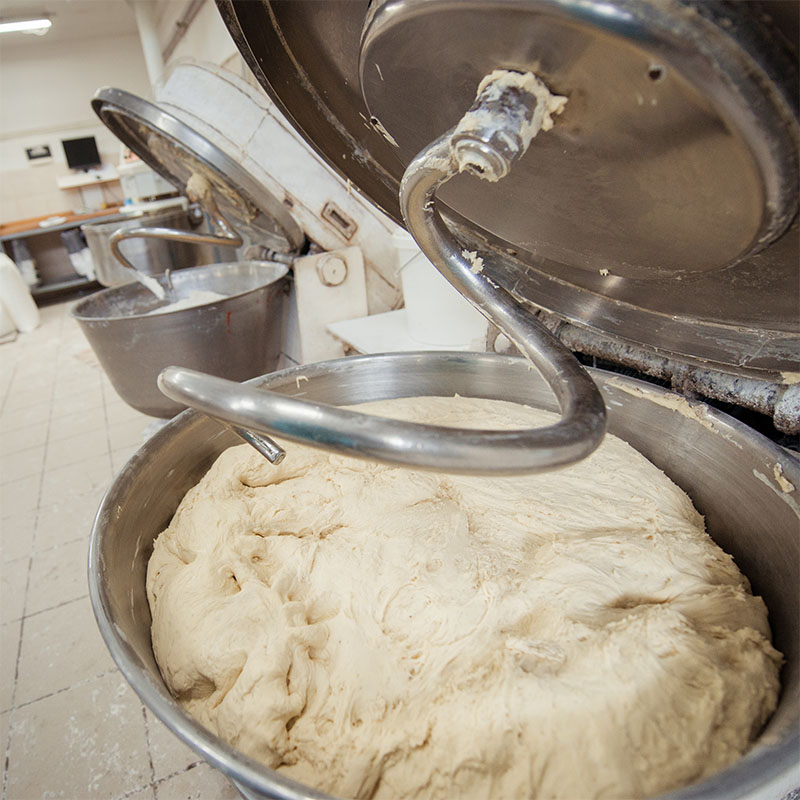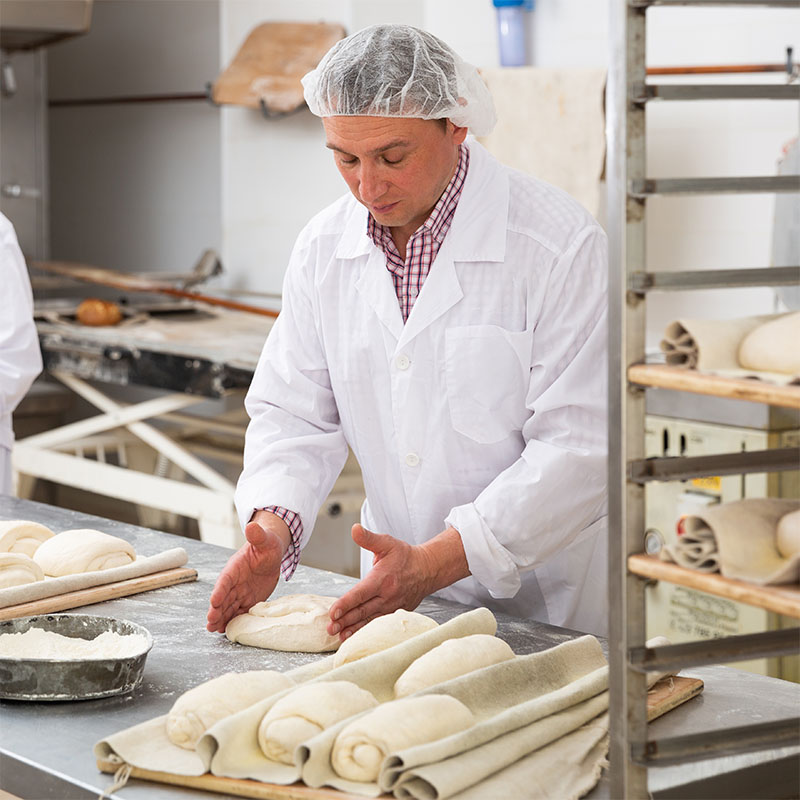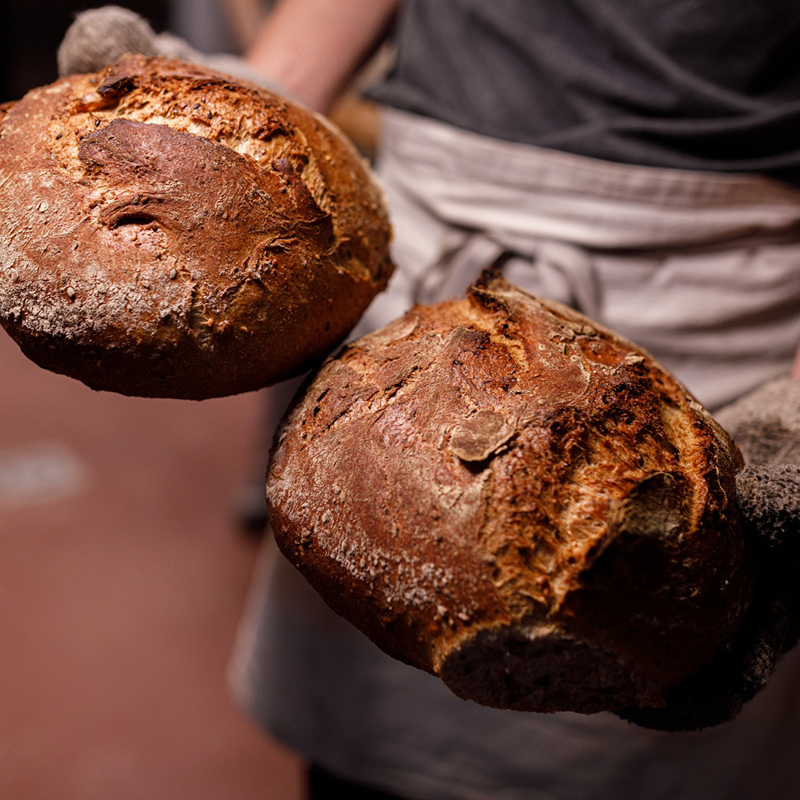Baking ingredients and ready-to-bake flour preparations
History and Basics
Ultimately, a pastry is a conveniently chewable, sliceable, and storable composite structure of flour or meal and serves as a nutritional product. Derivatives of the cereals wheat, rye, millet, spelt, buckwheat, barley, oats, corn, rice or triticale, liquid and minor additives are kneaded to form dough, fermented if necessary and solidified by means of thermal action. In most cases, the crust-like surface is harder and drier than the inside of the pastry. The crust is mostly a flavor builder for roasted flavors, it protects the pastry from dehydration and the formation of mold.
It can be reliably proven that sourdough bread was baked in Egypt around 2000 years BC. Gas inclusions in the dough increased the volume of the baked goods and made them tastier and more enjoyable to eat. In Europe, the culture of baking bread only developed in the Middle Ages. But it was not until the 1800s that important process technologies became available, such as the mechanization of field and harvest work, milling and separation technology, and the technology of storage, conveying, mixing and kneading. As a result, the price of baked goods dropped and the consumption of bread became affordable for all groups of the population.
In Northern Europe, the high culture of bread baking and the art of beer brewing have mutually stimulated each other. It is assumed that regionally acquired craft know-how was handed down and refined competitively within the medieval guilds. To this day, the bakery trade is an apprenticeship with a three-year training period. Although you can buy bread, rolls, cookies, cakes and tarts in the bakery, the baker differs significantly from the confectioner. The latter is responsible for sweet products such as cookies, cakes and pies and completes an independent confectioner's apprenticeship with the final journeyman's examination for confectioners.
Baking agent ingredients are highly concentrated and have amazing properties
Ready-to-bake "flours" contain only a few percent by weight of the baking agent. The baking agent is a powdery high-concentrate that must be particularly well dispersible. It must be just as easily dispersible in the dry flour as in the dough.
Two different mixing methods for different tasks: "powder mixing" and "kneading". When a powdered mixture is mixed, this is done by initiating pushing movements. The mix particles slide past each other and come into contact with many other particles. Powders are mixed industrially either by swirling them (eddy current mixing) or by shearing them (shear mixing).
A kneading process is completely different. Doughs and pastes can only be sheared with a great deal of force.They are mixed by applying normal stresses. This can be imagined as follows: The dough is drawn long and then folded. Again it is stretched and folded. In this respect, baking agents must have two properties. They must be readily dispersible in the flour and they must also be readily dispersible in the dough. There are up to 40 different individual components in a baking agent. Many of these are liquid additives. They must be ideally homogeneous and have good rheological properties. In addition, they should be as dust-free as possible. amixon® offers mixing systems that mix baking agent concentrates ideally accurately, gently and cool. This is because the mixing process should take place without heat input. The baking agent compounds should be packed cool. Then they remain free-flowing - without cooling - for a long time and have a long shelf life.
Baking properties are guaranteed
Strictly speaking, baking improvers represent a kind of "guarantee of success" for baked products. They are intended to compensate for fluctuations in the quality of the raw material flour and to simplify baking. In the 1850's it was already known that salt and also malt extract are effective additives. And people knew at which ambient temperatures the dough preparation was particularly successful. Later, it was discovered that sauerkraut juice, lecithin, monoglycerides, enzymes and ascorbic acid can also be used to effectively influence baking results.
At this point, yeast should be mentioned as a particularly effective baking ingredient. As single-cell organisms, yeast fungi reproduce primarily in clusters of sprouts. Typically, brewer's yeast or wine yeast is cultivated under sterile conditions. With controlled heat supply, the yeast fungus multiplies in the nutrient substrate made of cleaned molasses, ammonium salt, phosphate and oxygen. This takes place in large fermenters. These are temperature-controlled, slowly rotating liquid stirring vessels. Yeast is then present as a solid in the liquid. It is washed and filtered several times. In baking factories, yeast is easily handled and automated in the form of a pumpable suspension. It is transported in tank trucks and automatically dosed into the kneading machine from factory storage tanks with dosing pumps during the kneading process. For medium-sized bakeries and for end consumers, baker's yeast is available as semi-solid block yeast pressed in "cubes", as dry yeast powder or as finely dispersed instant dry yeast.
Strong kneading promotes an even, finer poring in the dough
If the ambient conditions are right, the desired gas formation occurs in the dough; the sugar molecules ferment into ethanol and carbon dioxide. A good pastry should form a reasonably homogeneous structure of gas bubbles in the dough. The gas which is required for this process is formed uniformly by the yeast when the dough is kneaded/homogenized in a suitable manner. In this process, the wheat gluten activated by shear fulfills the task of enclosing the gas bubbles that have formed, among other things.
In the case of baking powder, an acidifier - disodium dihydrogen diphosphate or monocalcium orthophosphate - is already added to the sodium hydrogen carbonate. The raising agent must be stored in a particularly dry place, because in the presence of water it forms carbonic acid gas. In particular cases, the acidifying component - which can also be crystalline citric acid - is coated with fat. Then the gas formation takes effect in the oven with a delay when the fat coating melts.
In view of the fact that the production of baked goods is highly automated, doughs must meet the requirements of process technology. For example, doughs for rolls should be viscous, not sticky, but remain stable after shaping and form an even and tasty crust. These and other properties can be controlled using small additives such as emulsifiers, proteinases, hydrocolloids, ascorbic acid cysteine and starch derivatives. Similar to the art of tasty cooking, the reaction of fat, sugar and protein under the influence of heat also plays an important role in baking. The so-called Maillard reaction not only creates a brown-golden color on the crust, it also develops a nice scent (caramelization takes place at around 150°C) and a spicy flavor. The sugary component can be contributed, for example, in the form of a spray-dried glucose syrup.
Only your own bakery can offer individual products
The classic artisanal bakery has changed significantly. Only a few bakeries still have their own baking workshop. In 2020, about 10,200 medium-sized wholesale bakeries produced and supplied for about 45,000 of their own retail stores. These large bakeries operate semi-continuously with high levels of automation and are surprisingly flexible. A typical supply radius of such a large bakery is about 30 km. The classic baker is transforming into a product refiner, demand forecaster, plant manager and distribution logistics specialist.
Labor-intensive basic operations such as the production of baking agents with liquid extracts, oil, yeast, seeds, fat, acid, raising agents, whey protein, whey powder, dry protein, xanthan gum, shortening, acidulants, mono- and diglycerides, malt derivatives, flavors, spices , soy protein, enzymes and emulsifiers are taken over by industrial-scale bakery companies, which produce hundreds of tons of dry goods and semi-solid goods per day in consistently high quality and supply the mid-sized wholesale bakeries. Baking agent factories are highly specialized and, on request, also develop special formulations for a wide variety of baked products with more or less pronounced unique selling points. In this respect, they support the bakery operation with training and creative ideas. Baking agent companies provide valuable support when the baking company wants to attract special attention with a particularly attractive product portfolio or an advertising campaign. Scientists at universities and technical colleges teach and research in a wide variety of fields related to grain refinement. They provide the nutritional science foundation and advise legislative bodies regarding this essential nutrition industry. Although bakery products are also a convenience food, they are mainly a staple food and a daily source of carbohydrates and trace elements such as sodium, potassium, salt, magnesium, calcium and phosphorus, as well as vitamins B1 and B2.
© Copyright by amixon GmbH


